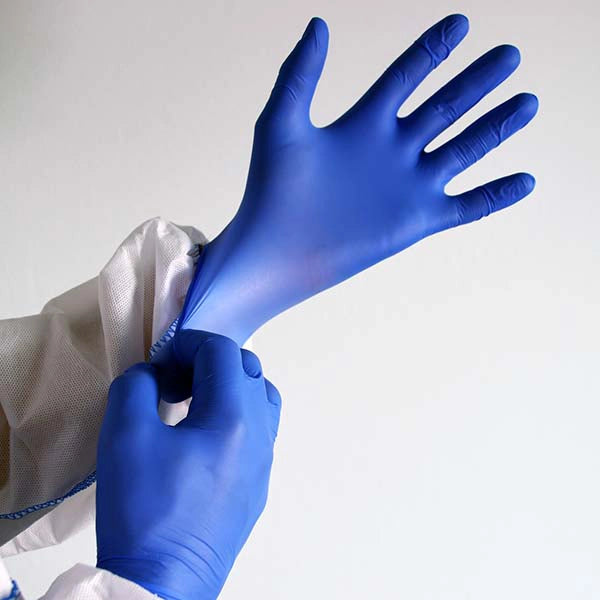Yes, natural latex exists and is derived from the sap of rubber trees.
Natural latex has gained popularity in recent years as a sustainable and eco-friendly material for various products, from mattresses to gloves.
In this article, we'll explore the origins of natural latex, its harvesting process, and the methods used to transform it into the versatile material we know today.
What is Natural Latex?
Natural latex is a milky white liquid that comes from the sap of rubber trees, primarily the Hevea brasiliensis species. These trees are native to South America but are now widely cultivated in tropical regions around the world, particularly in Southeast Asia and Africa.
The sap is collected by making small incisions in the bark of the rubber tree, allowing the latex to flow out into containers. This process, known as rubber tapping, is performed early in the morning when the latex flow is most abundant. The trees are not harmed during this process and can continue producing latex for many years.
Once collected, the liquid latex undergoes processing to transform it into a stable, usable material. The two primary methods for processing natural latex are the Dunlop and Talalay methods.
Harvesting Natural Latex from Rubber Trees
Harvesting natural latex is a sustainable process that involves tapping the rubber trees without causing permanent damage. Skilled tappers carefully make a spiral cut in the bark, just deep enough to allow the latex to flow without harming the tree's growth.
The latex drips into cups attached to the tree, and the tapper collects it later in the day. This process is repeated every few days, allowing the tree to recover between tappings. A single rubber tree can produce latex for up to 30 years with proper care and management.
The Dunlop and Talalay Processing Methods
After harvesting, the natural latex undergoes processing to create a stable, durable material suitable for various applications. The two primary methods for processing natural latex are the Dunlop and Talalay methods.
The Dunlop method is the older and more straightforward of the two. In this process, the liquid latex is whipped into a froth, poured into molds, and then vulcanized (heated) to create a solid foam. The resulting Dunlop latex is denser and more durable than Talalay latex.
The Talalay method involves a few additional steps. After whipping and molding, the latex undergoes vacuum expansion, flash freezing, and then vulcanization. This process creates a more consistent and less dense foam compared to Dunlop latex. Talalay latex is often softer and more breathable, making it a popular choice for mattresses and pillows.
Organic Latex vs. Natural Latex: What's the Difference?
While all organic latex is natural, not all natural latex is organic. The key difference lies in the farming and production practices used to create the latex.
Organic latex must adhere to strict standards throughout the entire process, from the cultivation of rubber trees to the manufacturing of the final product. These standards prohibit the use of synthetic fertilizers, pesticides, and other harmful chemicals.
On the other hand, natural latex can be produced using conventional farming methods that may involve the use of chemical fertilizers and pesticides. While still a more eco-friendly choice compared to synthetic latex, natural latex that isn't certified organic may not be as pure or sustainable as its organic counterpart.
The Role of the Global Organic Latex Standard (GOLS)
The Global Organic Latex Standard (GOLS) is the leading certification for organic latex products. It ensures that a product contains at least 95% certified organic raw material, with the remaining 5% consisting of permitted non-organic additives.
GOLS certification also takes into account the social and environmental aspects of latex production, ensuring fair labor practices and responsible waste management. Choosing GOLS-certified organic latex products supports sustainable farming practices and promotes a healthier, more transparent industry.
When shopping for latex products, look for the GOLS certification to ensure you are getting a truly organic product. If a product claims to be "100% natural latex" without the GOLS certification, it may not meet the strict organic standards and could potentially contain traces of chemicals or synthetic materials.
Latex vs Natural Rubber Latex: Differences and How to Choose
The primary differences between natural rubber latex and synthetic latex lie in their origins, sustainability, and physical properties.
- Natural rubber latex is renewable and biodegradable, with superior elasticity and durability. It is breathable, soft, and responsive, making it ideal for products like mattresses, gloves, and medical devices. However, it contains natural latex proteins that may trigger allergic reactions in sensitive individuals.
- Synthetic latex, by contrast, is hypoallergenic but chemically processed, making it less breathable and durable. It is often used in industrial applications, foam products, and adhesives.
From an environmental perspective, natural rubber latex is the more sustainable choice due to its renewable nature and biodegradability. Synthetic latex, derived from petrochemicals, has a higher carbon footprint and does not decompose naturally, contributing to long-term waste.
Ultimately, the choice between natural rubber latex and synthetic latex depends on individual needs. Natural rubber latex is ideal for those seeking sustainable and durable products, while synthetic latex is better suited for individuals with latex allergies or specific industrial requirements. Understanding these differences allows consumers to make more informed decisions when selecting latex products.
👉 Check out our special latex gloves for your tasks and save up to 50% today!
Natural Latex vs. Synthetic Latex: A Comparison
When shopping for latex products, you may come across both natural and synthetic options. Understanding the differences between these two types of latex can help you make an informed decision based on your needs and preferences.
Differences in Production and Sourcing
Natural latex comes from the sap of rubber trees, while synthetic latex is made from petrochemicals. The production of natural latex involves harvesting the sap, processing it, and then creating the final product using either the Dunlop or Talalay method. In contrast, synthetic latex is entirely man-made, using chemical compounds to mimic the properties of natural latex.
Comfort and Feel
Natural latex is known for its superior comfort and feel, as it provides a responsive and supportive surface that conforms to your body. It also offers excellent breathability, which helps regulate temperature and prevent heat buildup. Synthetic latex, while designed to imitate natural latex, may not provide the same level of comfort or breathability.
Durability and Lifespan
Products made from natural latex are generally more durable and long-lasting than those made from synthetic latex. Natural latex's inherent strength and resilience make it resistant to wear and tear, ensuring that your latex products will maintain their shape and support for years to come. Synthetic latex, on the other hand, may deteriorate faster and lose its properties over time.
Environmental Impact
Natural latex is a more eco-friendly and sustainable choice compared to synthetic latex. Rubber trees are a renewable resource, and the harvesting process is environmentally friendly when done responsibly. Synthetic latex, derived from petrochemicals, has a larger carbon footprint and contributes to the depletion of non-renewable resources.
Potential for Allergic Reactions
While natural latex is hypoallergenic for most people, some individuals may have a specific allergy to latex proteins. In such cases, it's important to opt for latex-free alternatives like nitrile or vinyl. If you suspect a latex allergy, consult with a healthcare professional and refer to the Latex Glove Allergy Guide for more information on symptoms, testing, and management.
Ultimately, the choice between natural and synthetic latex depends on your individual needs, preferences, and any potential allergies. By understanding the differences in production, comfort, durability, environmental impact, and allergy potential, you can make an informed decision when selecting latex products.
| Feature | Natural Latex | Organic Latex | Synthetic Rubber |
| Source | Derived from rubber tree sap (Hevea brasiliensis) | Also derived from rubber tree sap | Made from petrochemicals (e.g., styrene-butadiene rubber) |
| Processing | Minimal additives using Dunlop or Talalay methods | Strict standards; no synthetic chemicals | Chemically processed to mimic natural latex |
| Sustainability | Sustainable and renewable resource | Highly sustainable; organic farming practices | Not sustainable; relies on non-renewable resources |
| Certifications | May lack certifications (e.g., GOLS) | Certified (e.g., GOLS, USDA Organic) | No organic certifications |
| Durability | High durability and long lifespan | Same durability as natural latex | Less durable; tends to degrade faster |
| Breathability | Highly breathable; regulates temperature | Highly breathable; promotes cooler sleep | Less breathable compared to natural latex |
| Allergy Risk | Contains latex proteins; may trigger allergies | Similar allergy risks as natural latex | Hypoallergenic; no latex proteins |
| Environmental Impact | Biodegradable; minimal environmental impact | Biodegradable with strict eco-friendly processes | Non-biodegradable; higher environmental impact |
Is Natural Latex Toxic?
Natural latex itself is non-toxic and safe for use in various products. The sap harvested from rubber trees undergoes minimal processing, making it an eco-friendly and sustainable material. However, to transform liquid latex into a stable foam, small amounts of additives are necessary.
These additives typically include sulfur and zinc oxide, which help vulcanize the latex and prevent premature oxidation. While some may worry about the presence of these additives, it's important to note that they are used in minimal quantities and do not pose a significant health risk when the final product is manufactured according to strict standards.
Debunking the Myth of 100% Natural Latex
When searching for natural latex products, you may come across the term "100% natural latex." However, it's crucial to understand that this is somewhat of a misnomer. Due to the necessary additives used in the manufacturing process, no latex product can be entirely 100% natural.
The most accurate term for latex products with a high percentage of natural latex is "natural latex." These products typically contain 95-97% natural latex, with the remaining 3-5% consisting of the essential additives required for the manufacturing process.
Understanding Latex Mattress Certifications
To ensure that you are purchasing a safe and high-quality natural latex product, look for certifications from reputable organizations. For example, the Global Organic Latex Standard (GOLS) certifies that a product contains at least 95% organic raw material, ensuring that the latex is sourced from responsibly managed plantations.
Other certifications to look for include OEKO-TEX, which tests for harmful substances, and eco-INSTITUT, which evaluates the emissions and content of volatile organic compounds (VOCs) in latex products. By choosing natural latex products with these certifications, you can have peace of mind knowing that you are investing in a safe, healthy, and environmentally friendly product.
Benefits of Natural Latex
Natural latex offers several advantages that make it a popular choice for various products, from mattresses to gloves. Let's explore some of the key benefits of this versatile material.
Eco-Friendly and Sustainable
Natural latex is derived from rubber trees, a renewable resource that can be harvested without causing permanent damage to the tree. The harvesting process, known as rubber tapping, is sustainable and environmentally friendly, as it allows the tree to continue growing and producing latex for many years. By choosing natural latex products, you are supporting a more eco-conscious industry that prioritizes sustainability.
Durability and Longevity
Products made from natural latex are known for their durability and longevity. The inherent strength and resilience of natural latex make it resistant to wear and tear, ensuring that your latex products will last longer than those made from synthetic materials. This durability not only saves you money in the long run but also reduces waste, as you won't need to replace your latex products as frequently.
Hypoallergenic Properties
Natural latex is inherently hypoallergenic, making it an excellent choice for those with sensitive skin or allergies. Unlike synthetic materials that may contain harsh chemicals or irritants, natural latex is gentle on the skin and less likely to cause allergic reactions.
However, it's important to note that some people may have a specific allergy to latex proteins, in which case they should opt for latex-free alternatives like nitrile or vinyl.

Breathability for Cooler Sleep
When used in mattresses and pillows, natural latex provides excellent breathability, allowing air to circulate freely and preventing the buildup of heat and moisture. This breathability helps regulate body temperature, ensuring a cooler and more comfortable sleep experience. The open-cell structure of natural latex foam also contributes to its ability to dissipate heat and maintain a fresh, dry sleeping surface throughout the night.
Is Natural Latex Biodegradable?
Natural latex is biodegradable, which sets it apart from synthetic latex. This eco-friendly characteristic means that products made from natural latex will break down more easily when disposed of, reducing their environmental impact.
The biodegradability of natural latex is due to its organic origins. As a product derived from rubber tree sap, natural latex can decompose naturally over time when exposed to the elements. Microorganisms in the environment, such as bacteria and fungi, can break down the latex material, allowing it to return to the earth without leaving behind harmful residues.
In contrast, synthetic latex, which is made from petrochemicals, does not biodegrade easily. Synthetic latex products can persist in the environment for many years, contributing to pollution and waste accumulation.
When you choose natural latex products, you are making a more sustainable and environmentally responsible choice. The biodegradability of natural latex ensures that your products will have a minimal impact on the planet, even after they have served their purpose.
What Are the Applications of Natural Latex?
Natural latex is a versatile material that finds use in various industries and consumer products. Its unique properties, such as durability, elasticity, and comfort, make it an ideal choice for many applications.
Mattresses and Bedding
One of the most popular uses of natural latex is in mattresses and bedding. Latex mattresses offer excellent support, pressure relief, and breathability, ensuring a comfortable and restful sleep. The material conforms to your body, reducing pressure points and promoting proper spinal alignment. Natural latex pillows and mattress toppers are also available, providing an additional layer of comfort and support.
Gloves for Medical and Industrial Use
Natural latex gloves are widely used in the medical and industrial sectors. They provide a secure barrier against pathogens and contaminants, making them essential for maintaining hygiene and safety.
👉 Buy our high-quality medical gloves and save up to 50% today!
Latex gloves are used for various purposes, including medical examinations, surgical procedures, dental work, and handling chemicals in laboratories and industrial settings. The elasticity and tactile sensitivity of natural latex allow for precise and dexterous movements, which is particularly important in these fields.
Other Consumer Products
Beyond mattresses and gloves, natural latex is used in a wide range of consumer products. Latex pillows offer similar benefits to mattresses, providing support and pressure relief for your head and neck. Latex is also used in shoe soles, providing cushioning and durability for comfortable footwear.
In the textile industry, natural latex is used to make elastic bands, waistbands, and other stretchy components for clothing. The material's resistance to tearing and its ability to maintain its shape make it an excellent choice for these applications.
How Long Do Natural Latex Products Last?
When you invest in natural latex products, you can expect them to provide long-lasting comfort and support. Natural latex is inherently durable and resilient, making it an excellent choice for items like mattresses, pillows, and gloves that see regular use.
The lifespan of your natural latex products will depend on several factors, including the quality of the latex, the manufacturing process, and how well you care for them. High-quality natural latex, processed using the Dunlop or Talalay methods, can last for many years without losing its shape or supportive properties.
For example, a well-made natural latex mattress can last up to 20 years or more with proper care and rotation. Natural latex pillows and mattress toppers can also provide reliable comfort for several years, maintaining their shape and responsiveness.
When it comes to natural latex gloves, factors like storage conditions and usage frequency can impact their longevity. Latex gloves can degrade over time, especially if exposed to extreme temperatures, UV light, or ozone. Latex gloves do expire, so it's important to check the packaging for the expiration date and store them in a cool, dry place away from direct sunlight.
To maximize the lifespan of your natural latex products, follow the manufacturer's care instructions and avoid exposing them to harsh chemicals or excessive moisture. With proper care and maintenance, you can enjoy the benefits of natural latex for years to come.
Final Thoughts
gloves.com offers a wide range of natural latex gloves, providing a durable and comfortable solution for your medical or industrial needs.
Their focus on quality and sustainability ensures that you receive reliable products while supporting eco-friendly practices.
Explore gloves.com's collections today to find the perfect gloves for your needs. Buy now and save up to 50%!






